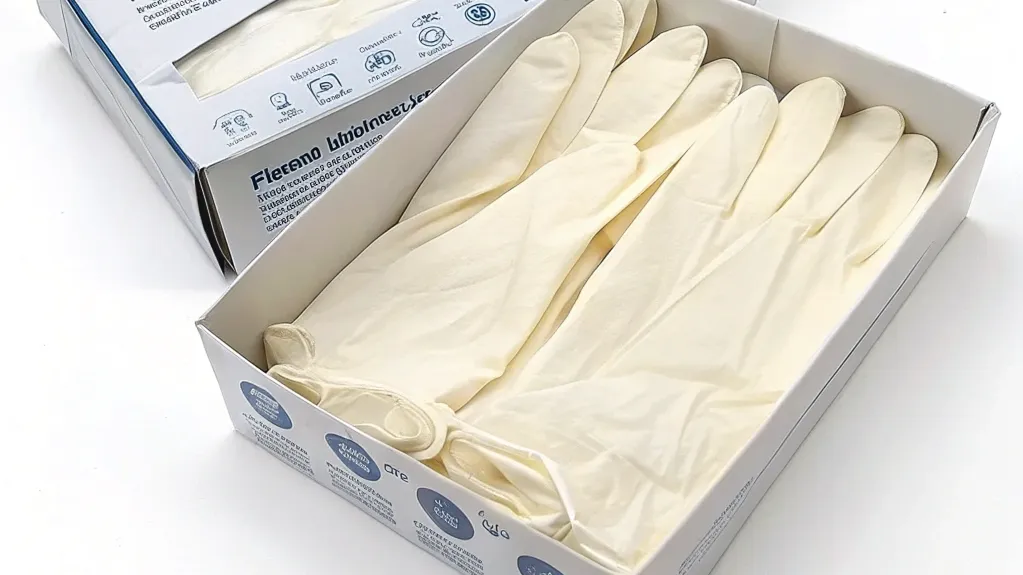Disposable gloves are essential for maintaining hygiene and safety across industries like healthcare, foodservice, and more. However, for individuals with sensitive skin or allergies, the wrong glove type can lead to discomfort, irritation, or severe allergic reactions. In this guide, we explore the causes of glove-related allergies, highlight the best gloves for sensitive skin, and provide practical tips to prevent adverse reactions. If you’re looking for gloves that minimize irritation, read on.
Causes of Allergic Reactions to Disposable Gloves
Allergic reactions to disposable gloves are more common than you might think, stemming from materials, manufacturing chemicals, or even improper use. Let’s examine the main causes:
1. Latex Allergy
Latex, derived from natural rubber, is a common material for disposable gloves. Unfortunately, it contains proteins that can trigger immune responses in sensitive individuals. Studies estimate that latex allergies affect 4-9% of the general population, with rates rising to 10-17% among healthcare workers due to repeated exposure.
Symptoms: Mild reactions include skin redness and itching, while severe cases can involve anaphylactic shock. Symptoms may include hives, a runny nose, and breathing difficulties, which can escalate quickly.
2. Chemical Sensitivities (Accelerator Allergies)
Certain chemicals used during glove manufacturing, known as accelerators, strengthen the glove material and expedite production. These include thiurams, carbamates, and mercaptobenzothiazoles (MBTs). Even small amounts of residual accelerators can cause allergic contact dermatitis in sensitive individuals.
Symptoms: Typically manifest as itching, redness, or rashes that develop hours or days after contact.
3. Powder-Related Irritations
Powdered gloves, once popular for their ease of use, can cause skin irritation and dryness. Cornstarch powder, often used in these gloves, can also spread latex proteins into the air, increasing the risk of airborne allergies. Due to these health risks, the FDA banned powdered medical gloves in 2017.
Symptoms: Skin irritation, dryness, redness, respiratory issues, and eye irritation.
4. Improper Glove Fit and Prolonged Use
Gloves that fit poorly or are worn for extended periods can trap moisture and cause friction, leading to skin issues. Tight gloves may cause heat buildup and friction, while loose gloves can lead to chafing.
Symptoms: Dry, cracked skin, redness, and painful sores—often mistaken for true allergic reactions.
Best Gloves for Sensitive Skin
Choosing the right gloves can make a significant difference for those who are prone to allergies. Here are the top options for individuals with sensitive skin:
1. Nitrile Gloves
Nitrile gloves, made from synthetic rubber, are free of natural rubber proteins, making them an excellent choice for people with latex allergies. They are durable, puncture-resistant, and chemically resistant.
Best for: Healthcare, food handling, and industrial use. Accelerator-free versions are available for those with chemical sensitivities.
2. Vinyl Gloves
Vinyl gloves, made from polyvinyl chloride (PVC), are entirely latex-free and avoid the use of chemical accelerators. While not as durable as nitrile gloves, they are cost-effective for light-duty tasks.
Best for: Foodservice, cleaning, and tasks that don’t require high durability.
3. Polyethylene (PE) Gloves
PE gloves are lightweight and latex-free, commonly used in food preparation settings. They are ideal for short-term use but lack durability for tasks requiring precision.
Best for: Short-term food handling.
4. Accelerator-Free Gloves
Some manufacturers offer accelerator-free nitrile gloves designed specifically for individuals with chemical sensitivities. By eliminating accelerators, these gloves significantly reduce the risk of allergic contact dermatitis.
Best for: Medical and laboratory environments where prolonged glove use is necessary.
5. Hybrid Gloves
Hybrid gloves, made from blends like nitrile and vinyl, offer a balance of cost, comfort, and allergy-free features.
Best for: General-purpose tasks.
6. Compostable Bioplastic Gloves
Compostable gloves made from plant-based materials such as PLA (polylactic acid) and PBAT (polybutylene adipate terephthalate) are sustainable and latex-free. These gloves are also typically accelerator-free, reducing the risk of allergic reactions.
Best for: Food handling, light cleaning, and eco-conscious tasks.
Tips to Prevent Allergic Reactions When Using Gloves
Even with the right gloves, following best practices can help prevent skin irritation:
1. Opt for Latex-Free, Powder-Free Gloves
Latex-free and powder-free gloves, such as nitrile or vinyl, are often the safest choices for individuals prone to allergies, especially in environments like healthcare where airborne allergens are a concern.
2. Change Gloves Regularly
Changing gloves frequently reduces moisture buildup, which can harbor bacteria and cause skin issues. The CDC recommends changing gloves at least every hour to keep hands comfortable and safe.
3. Use Properly Fitting Gloves
Wearing gloves that are too tight or too loose can lead to irritation. Ensure gloves fit snugly but comfortably to avoid friction and chafing.
4. Wash and Moisturize Hands Frequently
After removing gloves, wash your hands with a gentle, hypoallergenic soap to remove any residual allergens, then apply a moisturizer to prevent dryness.
5. Use Barrier Creams
Barrier creams can provide an extra layer of protection against allergens. Applying these creams before putting on gloves can help reduce skin irritation.
6. Rotate Between Different Glove Types
Switching between glove materials—like alternating between nitrile and vinyl—can minimize overexposure to any single substance, thereby reducing the risk of skin reactions.
Závěr
Allergic reactions to disposable gloves can be a significant concern, particularly in industries where glove use is mandatory. By choosing the right glove material, following good hygiene practices, and employing preventive measures, individuals can reduce their risk of developing skin irritation or allergic reactions. Nitrile, accelerator-free nitrile, and vinyl gloves are among the safest options for those with sensitivities. Be sure to assess your personal needs and workplace requirements when selecting gloves to keep your hands comfortable and protected.

